Choosing the optimal way to treat varicose veins is an urgent problem faced by patients and phlebologists. In the early stages of pathology development, mostly conservative methods of treatment are used, which enable the preservation of varicose veins. However, if such a technique proves ineffective, the only suitable option that can change the situation for the better is surgery to remove the veins on the legs. Surgical intervention is the most radical method of treating varicose veins, because distant areas of damaged veins simply cannot change varicose veins again.
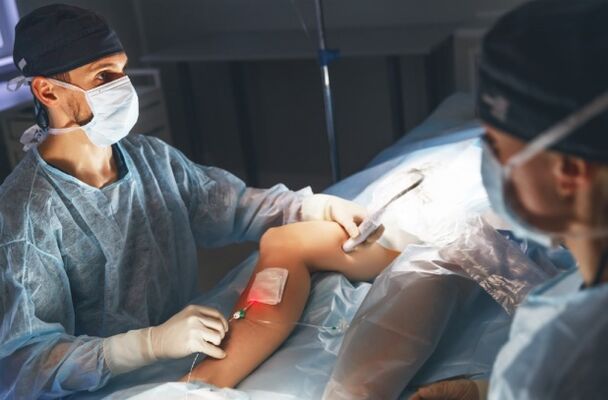
In this article, we will consider the types of vein removal operations for varicose veins that modern vascular surgery can offer: their characteristics, advantages and disadvantages, features of preparation and implementation, as well as rehabilitation and possible complications.
What can be achieved by vein surgery on the legs?
Surgical intervention for varicose veins aims to address the following issues:
- Reflux removal - pathological reflux caused by venous valve failure.
- Removal of varicose veins. It is recommended if the vein has undergone a serious transformation and there is no hope that normal blood flow will return to it. In this case, the part of the vessel that involved the varicose veins is removed, and the blood from it is redistributed through the healthy veins.
- Fight against cosmetic imperfections. Since CVI (chronic venous insufficiency) and varicose veins caused by it do not change the appearance of the lower extremities in the best way, the operation should be aimed, among other things, at eliminating aesthetic defects.
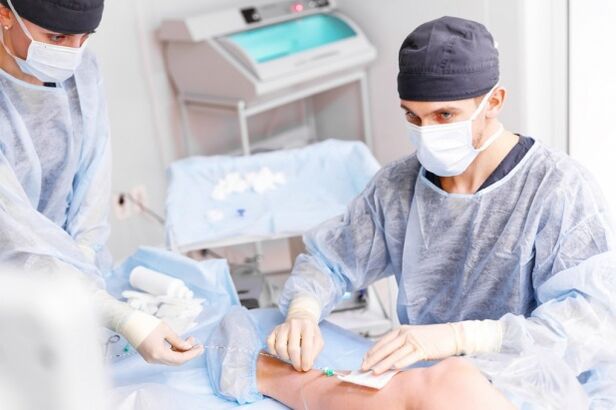
Types of vein surgery
The types of surgical interventions that modern angiosurgery can offer in the fight against varicose veins are divided into two groups:
- Operations aimed at mechanical resection of varicose veins affected by varicose veins with their subsequent ligation.
- Operations associated with thermal or chemical exposure to varicose veins.
The choice of the most appropriate vein surgery on the legs depends on the stage of development of the pathology, the age and general health of the patient, as well as the goals to be followed during the procedure.
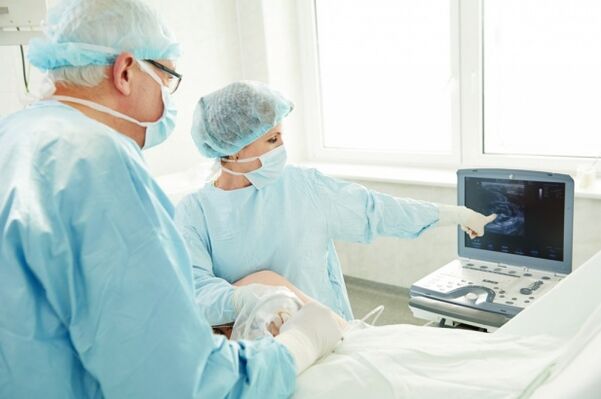
Phlebectomy of lower extremity veins: course of surgery
Combined phlebectomy (venectomy) is the "gold standard" in the surgical practice of treating varicose veins.
This method aims to remove varicose veins.
The operation has several variants, each of which is named after its inventor: phlebectomy according to Bebkokku, according to Narat, according to Mueller, which are performed under local (with extensive vascular lesions - under general) anesthesia.
Despite the differences, all of these leg vein removal surgeries have one thing in common: they involve cutting or puncturing skin 1 mm to 5-6 cm long, through which the angiosurgeon pulls the affected vein to the surface using special hooks. The veins are cut, tied and removed, after which sutures or a special patch are applied to the skin. This operation to remove varicose veins on the legs is very effective and allows you to achieve positive results in the treatment of venous pathology.
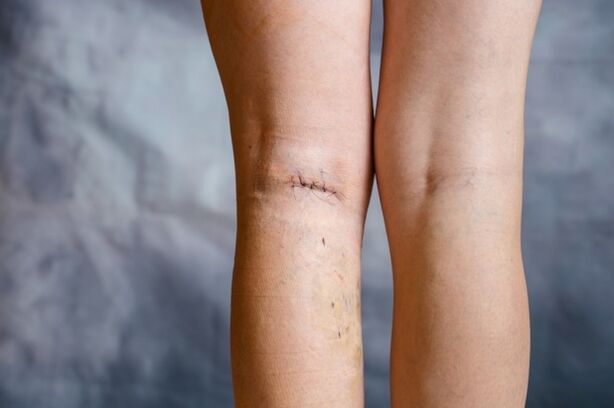
Laser vein surgery
With the development of medicine in the arsenal of vascular surgeons, more modern and less traumatic methods of performing vein removal surgery have begun to emerge compared to classical surgical intervention. With their help it is possible to shorten the time of the procedure, reduce postoperative scars, and also reduce the likelihood of complications and side effects. One of these methods is laser surgery of the veins of the lower extremities (endovenous, endovascular or endovascular laser coagulation).
A special laser light guide is inserted into the cavity of the affected vessel, heating the blood and the walls of the veins. Under the influence of high temperatures up to 120 degrees, the walls of the vessel become blind, as a result of which blood stops flowing into this part of the vascular system.
Expert opinion
Depending on the area of the lesion and the number of veins being removed, treating varicose veins in this way usually requires several procedures lasting 30-60 minutes.
Laser vein removal surgery is low-traumatic, gives a good cosmetic effect (after it there are no visible scars and scars on the skin), does not require long-term hospitalization. However, it should be borne in mind that this technique is not suitable for treatment in the late stages of varicose veins, when the diameter of the veins increases significantly and there are varicose veins; in order to remove them, traditional surgical intervention will be required.
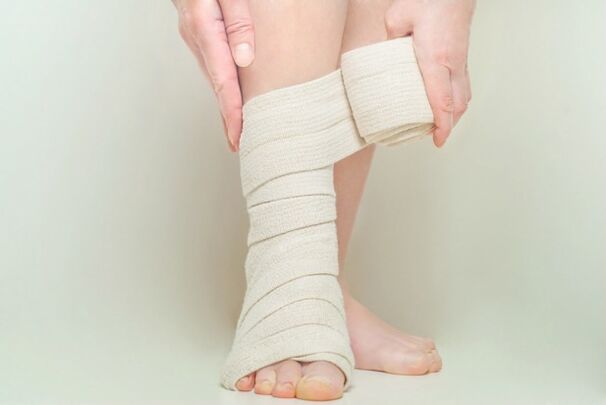
Sclerotherapy
This is another modern vein removal operation that allows you to achieve noticeable results with minimal trauma. Sclerosant is injected into the lumen of the dilated vessel - a special liquid or foam that sticks to the walls of the affected area of the vein. By performing sclerotherapy you can achieve a quick cosmetic effect without scars, which makes it very popular. However, this procedure is suitable only for the initial phase of varicose veins, as well as for telangiectasias.

Radiofrequency vein surgery
RFA (radiofrequency obliteration) is an effect on the affected areas of blood vessels with radio signals of a certain frequency, which leads to heating of the vein walls, destruction of the endothelium and subsequent closure of the vascular lumen. The procedure is minimally invasive and does not require hospitalization.
Preparations for vein surgery
Before the operation, it is necessary to carry out preparatory measures: ultrasound of the veins of the lower extremities, a clinical blood test and a coagulogram. Before the procedure, you must shave your leg without the use of creams, gels and other cosmetics.
Expert opinion
If general anesthesia is planned, you should refrain from food for 8 hours before the procedure (although in some cases your doctor may allow a light snack). Also, a cleansing enema may be needed before general anesthesia.
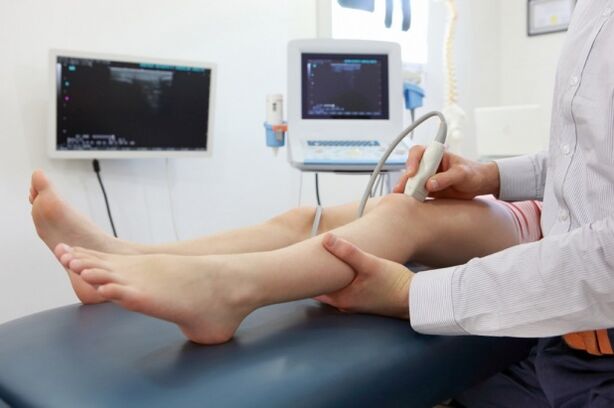
Contraindications for leg vein surgery
These surgical interventions are not recommended during pregnancy, with serious endocrine and cardiovascular pathologies, at the time of exacerbation of chronic diseases, in the presence of infectious and inflammatory processes in the legs.
Recovery after vein surgery
The duration of the recovery period depends on the number of veins removed, the general health of the patient and his compliance with the recommendations of the phlebologist.
Usually the recovery period lasts from 2 months to six months.
Depending on the type of surgery, limited activities may be recommended to the patient during the recovery period. For example, after laser coagulation and sclerotherapy you can get up and move immediately, after sclerotherapy you have to walk for about an hour, while combined phlebectomy requires a certain period of limited mobility.
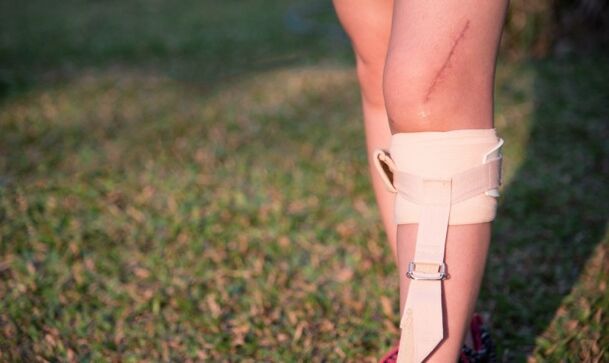
Recommendations for rehabilitation after leg vein surgery
To reduce the risk of recurrence and complications after surgery, there are some restrictions and recommendations that you must follow:
- You should wear knitwear with an appropriate level of compression. Leggings or stockings after vein surgery are a prerequisite for normal restoration of blood flow in the lower extremities.
- Correct the load on your legs. Here it is important to choose the "golden mean": do not allow complete immobility and prolonged standing, sitting, running.
- Do not lift weights (during the recovery period, the maximum allowed weight is up to 5 kg).
- Do not bathe in hot baths, do not bathe in steam baths or saunas, avoid contact with the skin in the area of distant veins of direct sunlight for some time.
- Wear baggy pants or skirts, give up tight, uncomfortable shoes (especially with heels).
- Take the medication prescribed by your doctor. The intake of venotonics, anticoagulants, antioxidants is most often prescribed.

Consequences and complications after vein surgery
Any surgical intervention can have side effects, and lower extremity vein surgery is no exception. Potential complications include the following:
- Relapses of varicose veins. If the root cause of varicose veins is not eliminated, there is a high chance that the disease will return. Therefore, in addition to surgery on the veins of the legs, it is necessary to conduct a comprehensive treatment of the pathology and remove the provoking factors.
- Temperature rise. A slight increase in local temperature in the area of the removed veins is normal in the postoperative period. Also, 1-2 days after the procedure, the total body temperature may remain at a subfebrile level.
- Hematomas. Bruising after vein surgery is a common complication after vein removal. This is caused by perforation of the vessel. Small bruises usually disappear without further treatment within a few weeks. However, if you have a large, painful bruise that does not go away in about 2 weeks, report it to your phlebologist.
- Pigmentation disorders. The change in skin color at the site of surgery usually lasts for a few weeks and then disappears. It should be borne in mind that hyperpigmentation is a very common complication after sclerotherapy.


To avoid these unpleasant phenomena, do not ignore medical recommendations, be sure to wear compression stockings and take medications recommended by a phlebologist.




































